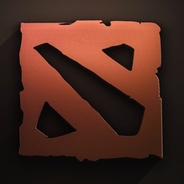TSR/Elo infers player's skill from the match outcome. Let's assume we are using Elo and that the two matched players both start at 1500, k-factor is equal to 20. The probability of either of them winning is 0.5, thus the victor is awarded 10 additional points, while the loser loses the same amount. The winner now sits at 1510 and the loser at 1490.
In case both players decide to play again, the odds will be against the player with 1490 rating, because he is presumably the worse player. The system converges until the ratings stabilise - provided we assume the skill of tracked players to be constant in the specified time frame. After sufficient number of games the system will be able to differentiate between the bad, the mediocre and the good players - even though they all started at 1500.
TSR differs from standard Elo in that it not only tracks the rating values (1500, etc.), but it also tracks the k-factor, which is not constant anymore, but has been turned into a second variable. Players of established skill should have lower k-factor values than newcomers since results of their matches are more predictable - provided they stopped improving. This is not a new concept by any means as it has been imposed from without the system in chess. The higher the rating backet, the lower the k-factor value is when it comes to chess Elo rating.
Пријавите се да бисте поставили коментар.

ok... in the "Sneak peek" you say :
"The only factors considered in determining the change in your rating is match outcome and SKILL difference between players."
... that's clear... BUT, how you determine the SKILL?..... how you can determine that "MISTER X have 1500 DBR and MISTER Y have 1600"?
DBR is created by SKILL difference and Match outcome, but skill have to be created from some other factors i think...
Which ones?